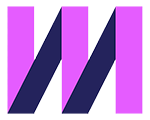Table of Contents
More than 82% of employees prefer to work from home instead of the office and statistics show a whopping 47% increase in productivity of people working remotely.
Remote working has emerged as a win-win for both employees and companies. Employees want to work from the comfort of their homes and save time traveling while companies want improved productivity with the freedom to hire beyond geographical boundaries.
But a remote setup can only be successful when the workflow is strong, defined, and flowing. Here’s how you can improve your team workflow to achieve maximum productivity and a positive work environment.
4 ways you can help improve your Remote Team Workflow
Adapting to a digital workspace takes time and planning. There are quite a few challenges that affect a remote setup, such as:
- Different time zones of people in the same team
- Lack of tools for work, communication, and collaboration
- Unclear schedules
- Not being able to track the work or productivity of teams
- Employees feeling isolated
To improve your remote team’s productivity, you’ll need to adopt a two-fold approach. First, establish a clear structure: their setup, communication lines, who reports to whom, and work schedules.
Second, you will need to find and remove blockages that bring your remote team down. Someone might be having problems adapting to new technology, someone might be having problems collaborating. Whatever the problem is, track it and resolve it.
Lastly, as an additional step, support your team in any way you can. Be it their mental health or providing them with resources to learn and improve.
Organize their setup
The first step in improving the productivity of your remote team is organizing their setup. With everyone working from their home, you need to ensure that they have a basic physical setup. Sure, they might work from their couch, but that couch needs to be in a secluded, quiet place so that they don’t get disturbed much.
Next, take a look at their computer or laptop to see if they have all the needed tools to work, communicate, and collaborate. They would need a camera to be able to attend work meetings. An easy PDF to word converter will help them convert files to edit better. Organizing tools will help them keep their data organized and prevent cluttering.
Make a checklist of necessary tools and ensure every employee has them on their system. See that the systems used by your team are capable of supporting remote working. Moreover, teach employees to use the tools effectively.
Having an organized setup sets a solid foundation for any remote team. They have the correct physical setup and all the needed tools at their disposal to be able to perform their jobs efficiently and quickly, without any roadblocks.
Establish clear communication lines
The second order of business needs to be about establishing clear lines of communication and who reports to whom. Employees may need to communicate once during a project or multiple times during their shift, depending on their roles and the need for the work they perform.
Moreover, every work-related conversation between your team needs to be on record. Provide them with both the hardware and software to communicate effectively. The communication platform should include everyone on the team.
Provide a basic tutorial so that everyone knows how to communicate through it. Provide multiple channels of communication, preferably on the same platform, such as:
- One-on-one chats
- Department group chats
- Entire company chats
- One-on-one video calls
- Group video meetings
- Email conversations
- Conferences and presentations
Clear communication helps employees understand their job roles better and avoid confusion. Having it recorded allows them to go back and revisit instructions whenever they need and avoid unnecessary delays.
Use asynchronous communication
As important as it is to have real-time communication available to employees at all times, asynchronous communication can greatly contribute toward speeding up and improving the workflow.
Asynchronous communication happens when there is a time lag between a person receiving a message and responding to it. It allows the sender to send information and the reader to receive it without disrupting the flow of work.
It becomes even more useful in remote teams that have members spread across the globe. The sender can send the information during their shift and the receiver can respond to it when they join in their shift.
The sender will not have to wait around for an answer, knowing it will be a while. They’ll be able to get on with their work, speeding up their workflow. The receiver can replay the message to understand it better before responding, prompting clear communication.
Identify & clear roadblocks
Once you have the setup of your team and communication channels between them all setup, you shall begin analyzing the framework to identify roadblocks. The core setup remains the same, but things start to clog up the workflow over time.
For example, if the option to view links within the app may be broken on the collaboration and communication platform. Now, the employees who are more tech-savvy would be viewing them outside the platform while the others would leave them be, missing major chunks of information.
By analyzing your entire framework step by step, you’ll be able to catch roadblocks that hinder the workflow and resolve them. You shall also encourage your team to come forward with issues that affect their productivity.
Conduct a brainstorming session with your team to come up with ideas to clear roadblocks. They will be able to give solutions that will solve the problems on their end better than something you might come up with.
Simplify things
One of the most important aspects when working in a remote setup is to keep things as simple as possible. You’re already working in a disjointed setup where you cannot physically be with your team. You don’t want to complicate it further needlessly.
Review the steps in each process in your organization. Only keep the steps that are absolutely necessary. For example, if the work communication/collaboration platform records when an employee logs in for work, they shall not be asked to record their attendance anywhere else.
Many companies require employees to ping HR when they log in for work or do something similar to register their attendance. This step can be completely eliminated by recording their log-in time.
It reduces a redundant step, saving everyone time and speeding things up. Look for things like this that may be the norm in an office setup but don’t need a place in the virtual work setup. Or were meant to facilitate things but might not be serving a purpose anymore.
Here is where you should focus when it comes to simplifying the framework of your remote setup:
Information sharing
Teams share information through written chats, verbal messages, video messages, files, documents, and video conferencing. Your goal shall be to allow them to share information easily and quickly. Moreover, there needs to be a system of acknowledgment to let the sender know their files have been received.
Collaboration
We’ve talked about real-time communication and asynchronous communication. The optimal collaboration for a remote team shall be a hybrid of the two. Encourage your employees to use asynchronous communication for things that are not urgent.
For situations where everyone’s input is needed, conduct video conferences. People will brainstorm together and solve problems quicker instead of sending messages and waiting for replies. Choose the mode of communication depending on the situation.
Use collaboration tools such as project management to create a smooth flow of information. You’ll be able to track your progress and manage tasks to help your team perform better. Moreover, all the information regarding a project will be organized in one place for your team to revisit as and when needed.
Work schedule
Work schedules are easy to track when working in the office but are challenging when working remotely. Give your team distinct roles and tasks to make sure everyone knows what they are doing.
You might track their task completion through worksheets/time sheets or task management tools. However, you shouldn’t focus on the process but rather on the result. Give them the task and a reasonable deadline.
Now, it’s up to them when and how they complete the task so long as they return with the desired results. It allows them to operate freely and be more productive as well as creative.
Empower your remote team for improved workflow
The key to the consistent workflow and enhanced productivity of a remote team lies in the framework it operates on. It’s your responsibility to empower your team to perform at its optimal potential.
Define the job roles every team member will perform and make sure they have the desired setup and tools to perform their job with ease.
Establish communication lines so there is no confusion among the team about who to report to. Keep checking in from time to time to see if the workflow is smooth and consistent
Let us know in the comments how you think a remote shall improve its workflow and increase productivity.
What is CloudApper AI Platform?
CloudApper AI is an advanced platform that enables organizations to integrate AI into their existing enterprise systems effortlessly, without the need for technical expertise, costly development, or upgrading the underlying infrastructure. By transforming legacy systems into AI-capable solutions, CloudApper allows companies to harness the power of Generative AI quickly and efficiently. This approach has been successfully implemented with leading systems like UKG, Workday, Oracle, Paradox, Amazon AWS Bedrock and can be applied across various industries, helping businesses enhance productivity, automate processes, and gain deeper insights without the usual complexities. With CloudApper AI, you can start experiencing the transformative benefits of AI today. Learn More


















